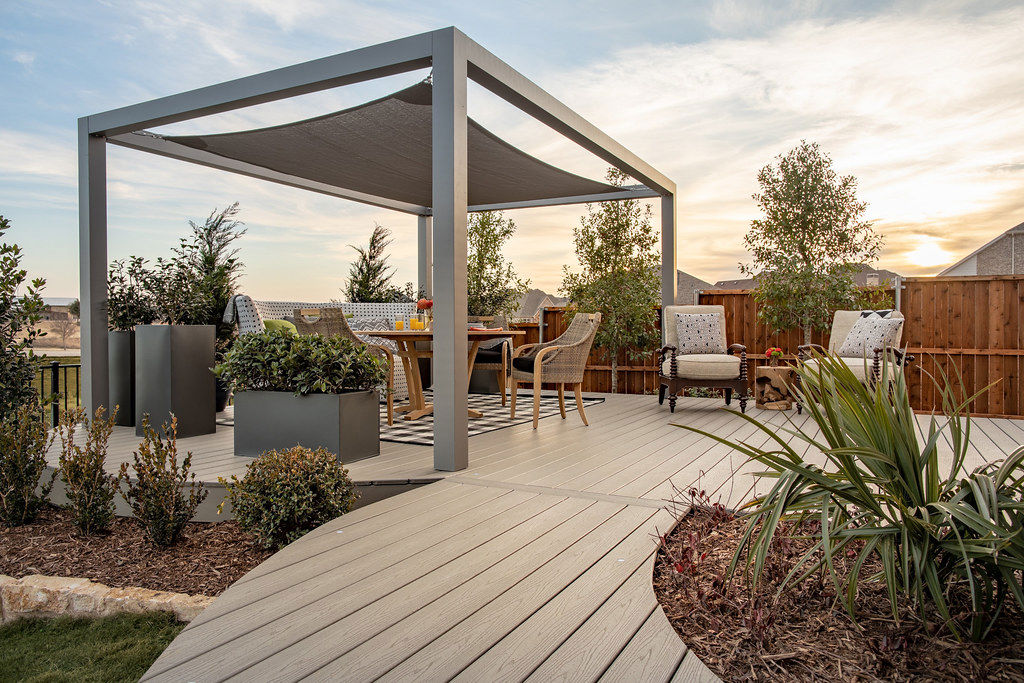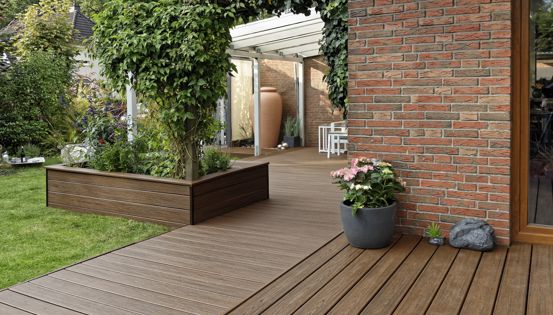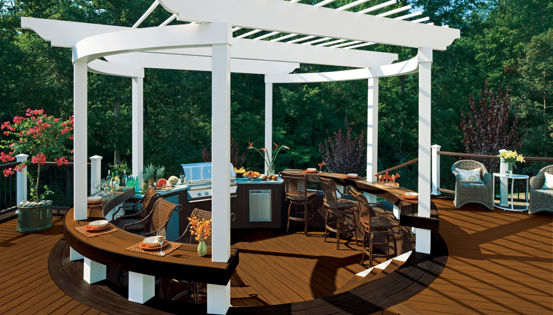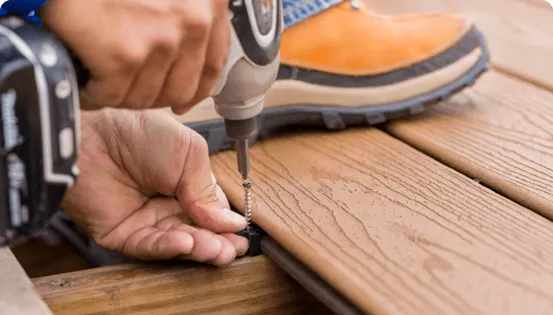Shade sails shield you from the heat of the sun, blocking UV light while providing their own distinctive upscale style. As a nice alternative or accompaniment to a pergola, a shade sail can be a fantastic way to provide shade where it’s needed most.
Installing a shade sail is fairly simple, but it requires a little planning, especially when it will shade a deck or another area with unique challenges.
Here are some of the ins-and-outs of shade sail installation, with tips to help you avoid common mistakes.
What to Consider Before Installing a Shade Sail
Before you install a shade sail, think about the smaller details involved in order to bring the bigger picture to life. That might include coordinating the placement of the sail, as well as the relation of the sail to nearby accessories. Planning these aspects of your shade sail project can make a night and day difference in how much you enjoy the results.
Shade Sail Design & Placement
Sail orientation has a large impact on overall presentation, but keep the practical in mind, too. For instance consider the path of the sun over the area you want to shade. Also, keep the sail away from sources of high heat, such as grills and fire pits.
When practical concerns conflict with style preferences, try to strike a balance between the two. For instance, sharply asymmetrical corners give a striking appearance but may provide less shade than other configurations. A perfectly flat sail can maximize shade coverage, but has limited visual interest. A sail that is too vertically inclined can make it vulnerable to the wind.
After choosing a location, look for places where you can create or use existing anchor points for the sail and evaluate their strength relative to the force you expect from the wind. The key factors are:
- Sun exposure (Or “Path of sun and desired shade coverage”)
- Sail size
- Location and strength of anchor points
- Seasonal wind speeds (averages and extremes)
Check Building Codes & Permit Requirements before Installing a Shade Sail
Before installing anything on or around your home, check local building codes and see if you need a permit. While many states do not have codes specific to shade sails, sunny states like California and Florida often do. Additionally, if your building is part of a Homeowners Association (HOA), find out what guidelines apply.
Shade Sail Mounting Hardware & Accessories
Most shade sail installations use similar mounting hardware to anchor, link, and extend the sail. The exact type and size of the hardware depend to a large degree on the size of the sail. Common hardware includes:
Anchors:
- Pad eye
- Eye lag screw
Links:
- Turnbuckle
- Snap hook / Carabiner
- S-hook
- D-shackle
Extensions:
- Chain
- Cable
- Non-stretching rope
Ways to Install a Shade Sail on a Deck
There are several ways to install a shade sail over a deck, most of which will entail multiple attachment points to get the right tension and strength. Anchoring the sail to an existing structure is fairly easy, but most installations will require additional support, usually permanent posts. Removable posts are also available.
How to Attach a Shade Sail to House Fascia
The fascia of your home is typically nailed to the ends of trusses or rafters, and using it as is to anchor a shade sail could cause the fascia to detach. It’s better to place extra supports within 2 to 3 feet of each anchor point on the fascia. With shade sails that exceed 150 square feet, ensure the structural integrity of the rafters is solid before proceeding. Add L-brackets or hurricane hangers to the rafter tails to reinforce them.
- Ensure the additional supports are high enough for your design.
- Ensure each anchor mounting point is strong enough to hold the sail.
- Orient the anchor hardware toward the center of the sail when fastening it to the mounting points.
Large sails and/or strong winds could require through-bolting steel plates to anchor points.
How to Install a Shade Sail Using Additional Supports
Good shade sail poles include pressure-treated wood (at least 6x6) suitable for ground contact and/or steel posts/pipes. Follow these steps to install wooden posts:
- Lay out the sail on the deck so you can determine where to place the posts; leave enough room, 2 to 3 feet, for the cable or rope that connects the sail to the post.
- Attach the anchor hardware to the post and, screw a pair of lag bolts into the post near its base, leaving 2 inches exposed; these “ears” will strengthen the post-to-concrete connection.
- Dig a hole to a depth at least one-half the length of the exposed pole. Place 4 inches of gravel at the bottom for drainage.
- Place the post, tilting it few degrees off vertical in the opposite direction of tension. Add temporary braces to hold the post in place, fill the hole with concrete, and allow the concrete to cure for 24 hours.
Tensioning a Shade Sail
A shade sail will often require more than 100 pounds of tension to give you a clean visual effect free of wrinkles.
Start by connecting the lines of the sail to anchors at two opposite corners. Remove slack by rotating the turnbuckles or with a ratchet strap. Don’t over tension. Connect the other corners and add tension. Adjust each corner to remove any wrinkling or sagging in the middle. Be careful not to apply too much tension to remove small creases, because that could tear the fabric.
Shade Sail Care & Cleaning
Hose off the sail to remove dirt and tree litter that can leave stains. For a more thorough cleaning, gently scrub the sail using a mixture of mild detergent and water. Don’t use harsh or abrasive cleaners (especially those containing chlorine) or stiff brushes, which can weaken the fabric and reduce its resistance to UV. Avoid putting the sail in the washing machine. However, if you must, set the machine for “gentle” or “delicate” and use a mild detergent.
Find contractors to help install a shade sail or shop for materials at a local retailer.







